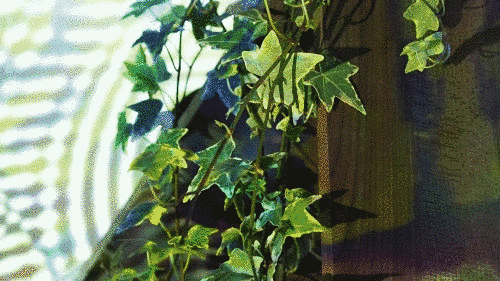From 1st – 29th July I was happy to be selected as an artist in residence for The New Art Gallery Walsall’s Stay at Home Residencies.

In the second blog post I looked at how I approached filming. In this third and final blog post I’ll be detailing my sound making process and sharing the finished film.
The next stage in making this film was working on the sound. As you can hear in a couple of the clips in the previous blog post the area that I live in is really really quiet! Everyone in the local area was using the Summer time to sit outside bathing in the sunlight. Was very relaxing for sure but recordings of the ambient background noise didn’t make for an interesting soundtrack. There was once the sound of a wood chipper but otherwise it was mostly silent. At times me playing music was the loudest sound!
Instead I took to making recordings from within the home. This process made very aware of the variety, and at times lack thereof, of sounds in my home environment. There’s lots of shuffling, tapping, television and dampened thud sounds. With the exception of the television, the place with the most variety of sounds is most definitely the kitchen and so most sounds I used came from there. There’s sounds of glass, metal, wood, and water and even from inside the fridge!
If you’ve been following any of my work for a while you’ll see that I’ve done a lot of live coding performances over the last two years. I like the liveness of this process and so chose to incorporate it into my sound making process. I took the samples that I recorded into TidalCycles and got coding! Here’s some of the recordings along with variations on the code that created them.
setcps(50/60/4) d1 $ sometimes (fast 2) $ whenmod 8 6 (# speed 0.5) $ slow "4 2? 1" $ sometimes (# accelerate "-0.05 0 0.02") $ loopAt "1 0.25?" $ stutWith 4 (1/8) (# speed 1.25) $ sound "bowl*<1.5 2 1> blinds*<1 2>" # n (irand 3)
d2 $ sometimes (fast 1.35) $ striate "2 4 8" $ stutWith "8 2 1" (1/16) (# speed (irand 3-1)) $ sound "droplet*4"
d3 $ every 7 (# speed "0.5") $ slow 4 $ sometimes (striate "8") $ stutWith 8 (1/8) (soak 4 (|+ speed 0.15)) $ juxBy (slow 3 $ sine) ((# speed 2) . (# accelerate "-1")) $ sound "stackingplates*2 [whack(3,9)]" # n "1 2" # pan (perlin)
d4 $ hurry "2 1 4 8" $ sound "whack*4"
Although not the same as the drone soundscapes that Rodell Warner creates I thought they provided a lot of texture and would work well as an accompaniment to a drone soundscape. For that I loaded up Ardour and the Helm synthesiser.
The process of making and putting together all of these separate parts was in no way linear. The tutorials I followed all recommended writing a script or having a plan and I certainly didn’t have either. For this exploratory stage of my journey into film making I think that was mostly ok but for anything in the future I would at least consider what kind of atmosphere, emotions, or general message I wanted to convey.
The actual editing process was a big chore. Open source video editing software on Linux still leaves a lot to be desired. Despite there being a number of video editors available nearly all of them have one failing in common: stability. With just a few HD resolution clips and no effects or transitions I was experiencing a lot of stuttering during seeking and playback and crashes when rendering. This, of course, caused a lot of frustration and definitely resulted in me spending less time editing than I would have liked to. For recent videos I’ve used Olive which has worked really well – seeking on the timeline is fast and there are few crashes – but at the time of editing version 0.2 was still too unstable to be usable.
After that last hurdle I feel I have produced a film that demonstrates a lot of what I’ve learnt.
The film, titled Windows Explorer, represents my desire to be out in the world again. Like pretty much everyone my world has shrunk and my engagement with the world comes from looking out of and into various windows, whether that be out of my office window or into a Zoom, Skype, Teams, Jitsi or whatever window.
With Thanks
This residency was certainly a big earning experience. In a conversation with the curators at the gallery I expressed concern that I wasn’t making enough, or that everything that I was making was, well, crap in comparison to the digital art portfolio that I’ve built up over the last decade. They reassured me that I was trying something new and so I can’t be expected to be immediately great at it. Even if I was in a situation where I had access to a team and equipment, a month isn’t really a long time to fully learn a new skill and make a complete piece of work using that skill. This really helped to put into context that this residency was time for me to reflect on my practice and to learn at my own pace.
From this residency I feel a lot more prepared to make narrative film, even if it’s a 1-minute film. I’ve already upgraded my equipment in preparation for future projects and have more knowledge of the multi-level process that goes into making a film.
Many thanks to The New Art Gallery Walsall for this opportunity 🙂